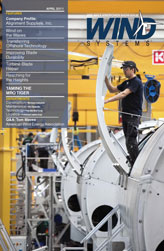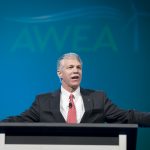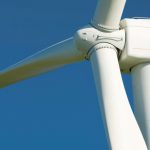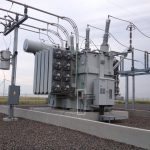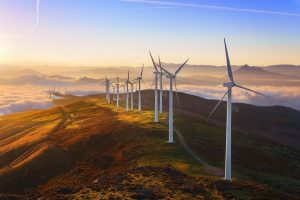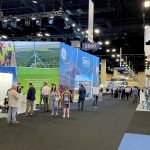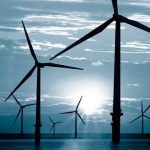The potential benefits of an offshore wind deployment in the United States are manifold. It is well known that offshore winds are stronger and more consistent than onshore winds, leading to increased capacity factors compared to onshore wind power production. Furthermore, the highly populated coastal areas in the United States consume about 78 percent of the nation’s electricity (DOE, 2008). The existing vast wind resources in the vicinity of high-demand coastal areas give rise to offshore wind deployment at scenarios of 10GW installed capacity by 2020 (at $0.10/kWh) and 54GW by 2030 (at $0.07/kWh). The European Union (EU) is leading offshore wind technology, with more than 10 years of experience and a heavily subsidized market. As for the United States, comparable subsidiaries will not be possible. Therefore, the key challenges facing offshore wind deployment in the United States are: a) high capital cost of current technology and manufacturing processes; b) challenges in the deployment of the supply chain and supporting infrastructure, and; c) permitting processes with adequate uncertainty and risk analyses for future investors. All contribute to the Cost-of-Energy (COE), and thus the competitiveness of offshore wind compared to traditional sources of energy.
In order to accelerate the development of offshore wind in the United States, the U.S. Department of Energy’s (DOE) Office of Energy Efficiency and Renewable Energy (EERE) Wind and Water Power Program partnered with the Department of the Interior (DOI) to implement the National Offshore Wind Strategy. While the DOE expands its efforts on the Offshore Wind Innovation and Demonstration (OSWInD) initiative, it is the DOI that develops regulations to review anticipated offshore wind projects along with siting, leasing, and construction of such new projects. The two critical aspects for the success of this initiative and U.S. offshore wind as a whole are to reduce the cost of offshore wind energy, and the timeline for deploying offshore wind energy. At present the lack of data drives up the financing costs of offshore wind projects to about half of the total COE. The OSWInD initiative and the recently announced funding opportunity address these inherently critical aspects through three main focus areas: technology development, market barrier removal, and advanced technology demonstration.
Technology Development
This focus area is divided into three main activities, i.e. computational tools and test data, innovative turbine concepts, and marine systems engineering. The main objective for all activities will be to provide better access to offshore wind resources at a reduced technological risk and lower COE. An emphasis will be given to the further development of design tools and wind turbine system components. This includes innovative turbine concepts, advanced drive concepts, controls and power electronics, support structures, and the total balance-of-system.
Market Barrier Removal
This area tackles the critical aspect of deployment timeline. The three main categories that will be considered are siting and permitting, complementary infrastructure, and energy resource planning. Market analysis, public acceptance, environmental risks, and the impact on current marine operations will play an integral part of this focus area. As for the infrastructure the development of a suitable manufacturing and supply chain combined with strategies for transmission and interconnection are being sought. The energy resource characterization will engage industry experts in an interagency working group in order to address potential stakeholders and program assets.
Advanced Technology Demonstration
The primary objective of this effort is to support a rapid installation of offshore wind turbines in U.S. waters. A successful deployment of advanced technology demonstration projects will help to reduce uncertainties in offshore operating conditions and to refine existing and innovative technology. Examples of potential demonstration projects are a smaller grid-connected demonstration project that serves as a research center for selected technical challenges associated with local conditions, and a large grid-connected demonstration project that allows for the installation and testing of multiple systems from multiple manufacturers.
The recent funding opportunity announcement will require responses from academia, national laboratories, and industries that present novel, creative, multidisciplinary, and intriguing ideas. It is much more than a funding opportunity—it concerns the future of wind energy in this country.
















